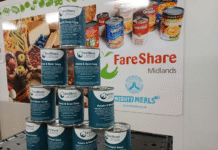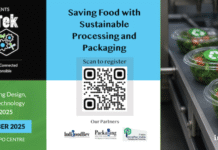A global business specializing in handmade beauty and cosmetics, Lush believes it has made a technical advance by producing a lip tint with a casing that shows the potential of 100% post consumer recycled polypropylene (pcr PP) in a challenging ‘fragile’ application.
Speaking to Packaging South Asia, senior buyer at Lush, Gabbi Loedolff, said, “The twist, wind up and down mechanism is fragile and presents challenges for both the material and manufacturing process.”
With more than 900 stores in the UK where it is based and around the world, turning over in excess of 450 million pounds annually, Lush considers end of life at the start of any new product development. The empty lip tint applicator needed to be made of a single material to be easily returned into a closed loop, the supply source of pcr PP resin.
“Proving its feasibility, showing it can be done, ”was a big obstacle, as was “to convince the manufacturer in the US to trial it and then to be pleased with the outcome,” said Loedolff.
Explaining why developing the product was a major challenge, Loedolff said, “We needed an item of packaging with a twist mechanism, in a single material, that would allow the product to be poured in, rather than moulded and then inserted, mainly from a production and formulation perspective. Lip product containers, especially wind up and down ones, are often made from a combination of plastics, which would make it hard for customers, or us, to recycle at the end of the product’s life. We found a company that had a tool that would work, but they had previously trialled pcr PP with no success.
“We were able to work together to provide them with samples of the material we use and they consented to running another trial, although they were not hopeful that it would succeed. The trial was successful and they are now able to produce a pcr PP piece of packaging that can feed back into our closed loop.”
Lush hopes it is changing perceptions of what is possible with pcr plastics. The next hurdle is to find a material converter and a manufacturer with compatible tooling on the same side of the Atlantic Ocean. For technical reasons Lush currently uses a material converter based in the UK and has to send the source recycled resin to the US for manufacture into the final product. “We shouldn’t be shipping it elsewhere. We’re looking for a local source of material in the US that works with the manufacturer’s tooling,” said Loedolff.
The lip tint with 100% pcr PP casing was recently launched at the largest Lush store in the world, the UK flagship in London’s Oxford Street, and will be rolled out globally for Christmas ranges. In April 2015 Lush opened a waste hub in the UK to regrind incoming PP from its bring-back scheme.











